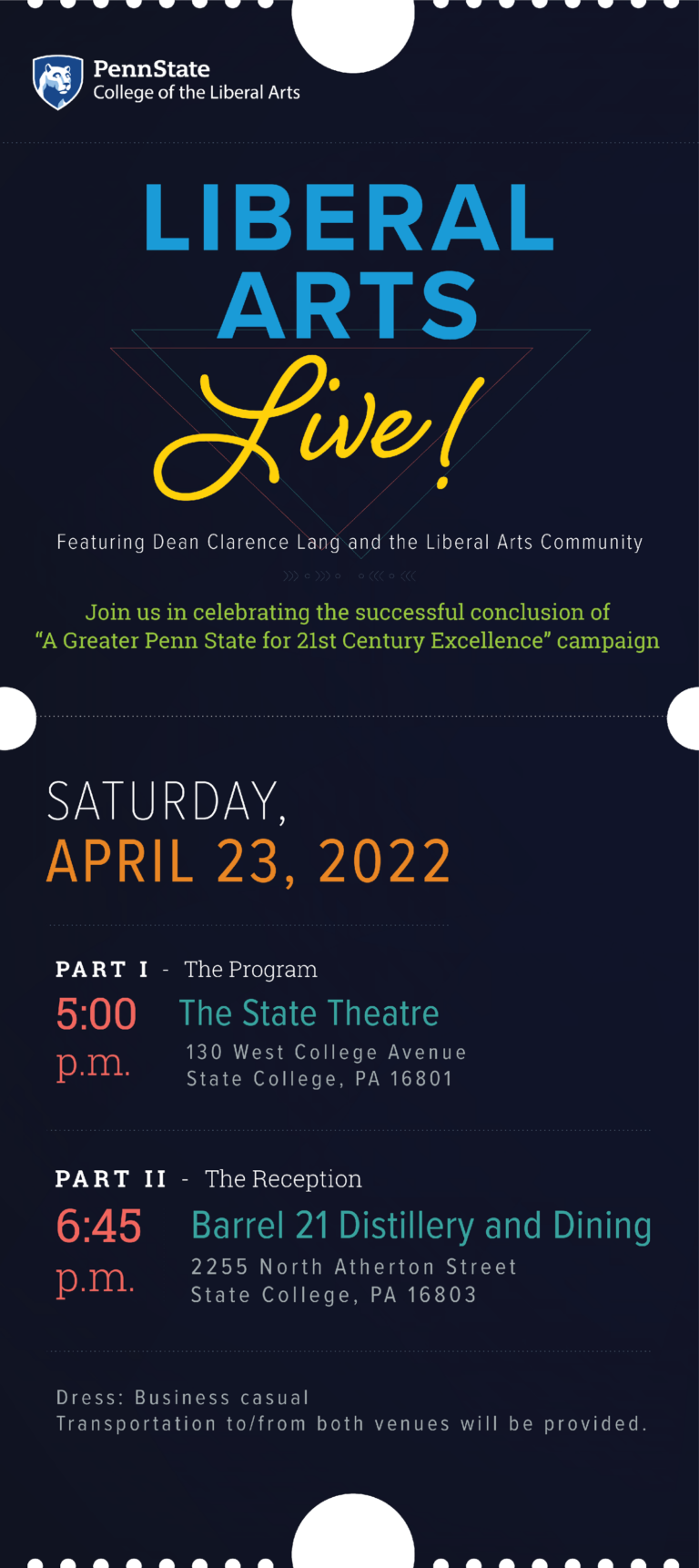
Adhering to the Penn State brand guidelines helps ensure our college’s design approach remains consistent with the University’s image and visual identity. While working within a design system can occasionally present challenges, we’ve developed a design process that allows us to effectively represent our college’s unique personality and brand voice while still aligning with the University’s visual presence.

Identify Design Goals
Clear and concise goals act as a design roadmap, guiding our decision-making to ensure that our deliverables meet their intended purpose. Ideally, goals should include measurable criteria, such as boosting event attendance or website conversions. While a measurable goal is best, at times, a goal can be as straightforward as redesigning an existing piece to align with the University brand guidelines.
1


Understanding Our Audience
After identifying design goals, we carefully consider the needs and preferences of our target audience. Understanding the audience’s perspective enables us to make decisions that resonate with and captivate users, resulting in a more impactful design. A few examples of a target audience are prospective students, current students, and alumni.
2


Emphasizing Brand Identity
The values of the College of the Liberal Arts form the backbone of our creative process and provide a sense of familiarity and authenticity to our deliverables across a variety of platforms and mediums. Incorporating existing brand materials into our designs not only creates a sense of consistency, but also lends a strong and trustworthy foundation to build upon, tapping into the emotional connection and pride that students, alumni, faculty, and staff feel toward the college.
3


Crafting Compelling Messaging
Collaboration between content strategists and designers towards established design goals, with a target audience in mind, ensures a more cohesive and unified final product. When content and design are consistent with each other, we can more effectively engage and activate our target audience. It's recommended to finalize content once design goals and target audience(s) have been identified, before embarking on the design phase.
4


Evolution, Not Limitation—Balancing Creativity and Brand Guidelines
While it can sometimes feel restrictive to work within established brand guidelines, it’s essential to recognize that these guidelines are not static, but rather evolve over time. By incorporating existing brand materials, we contribute to this evolution by finding innovative and creative ways to adapt and modernize our visual identity, while staying true to its core values and principles.
5


Collaboration and Feedback
A core component of our design process is the collaboration between multiple designers and content strategists to ensure top-quality deliverables. We gather feedback from the stakeholder we’re working with, refine our ideas, and iterate until everyone is satisfied with the result. This approach ensures that our designs effectively meet established goals and engage the target audience while giving our partners in the college ample opportunity for input.
6













